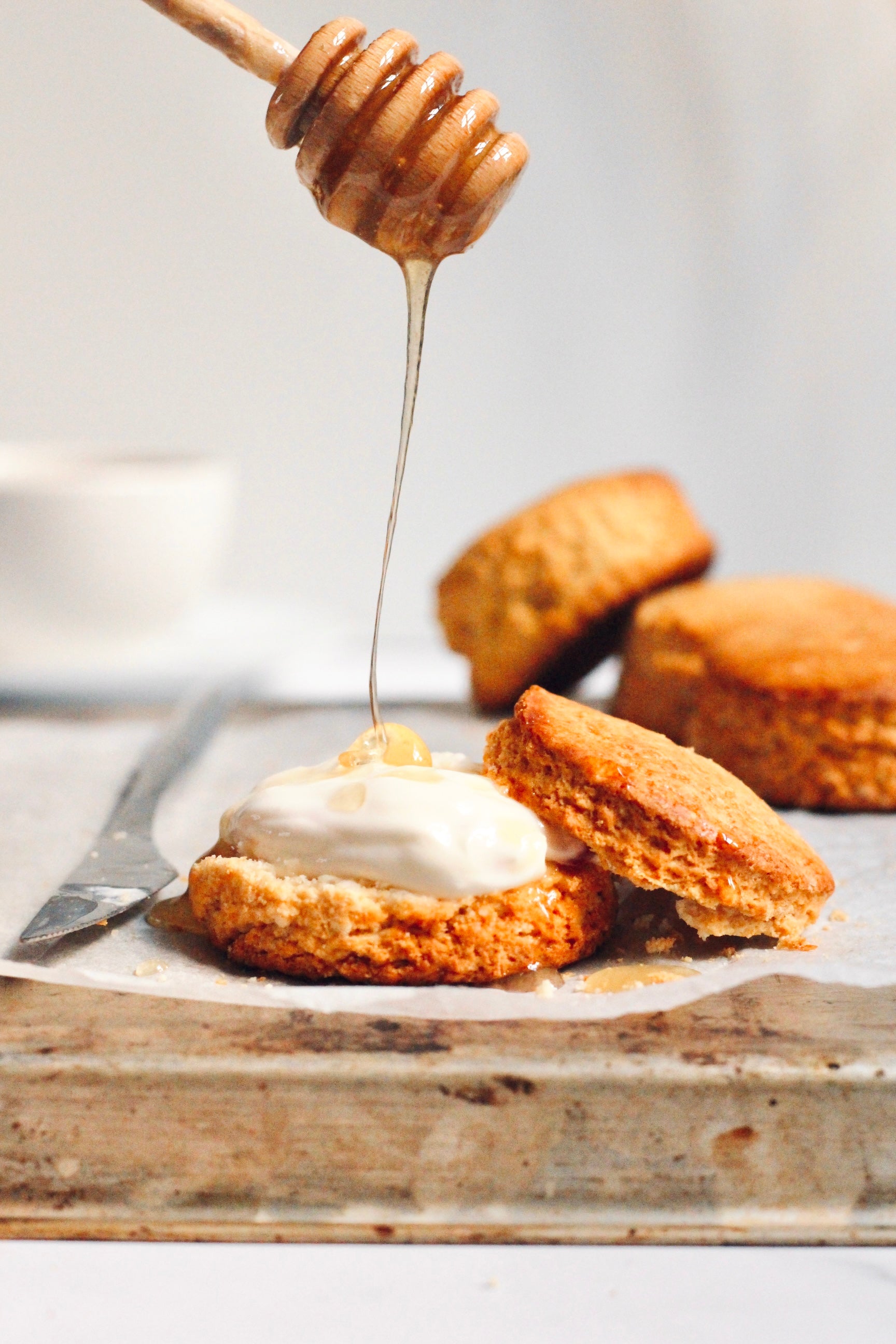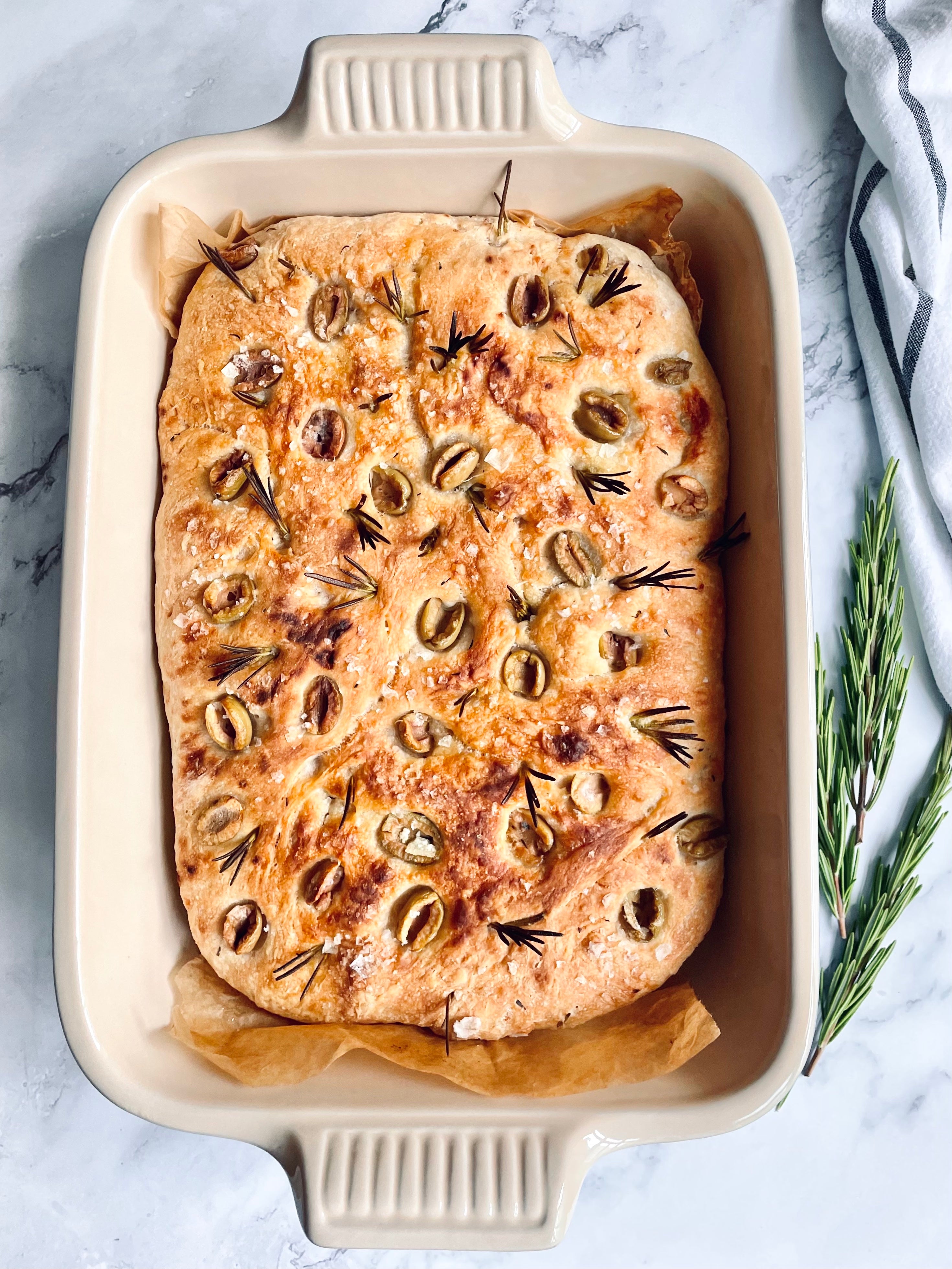
Buttery & Flaky Croissants
A croissant is a French pastry that is known for its flaky and buttery texture. It has a distinct aroma and taste that comes from its layers of buttery dough. The flavor profile of a croissant can be described as rich, buttery, and slightly sweet.
When you bite into a croissant, the first thing you'll notice is the crispy, flaky exterior, which gives way to a soft, chewy interior. The buttery flavor is evident in every bite, with a slight hint of sweetness that is not overpowering. The layers of the dough, formed by folding and rolling butter into the dough multiple times, create a distinct texture and flavor.
The texture of a croissant is equally delightful. With each bite, you can feel the delicate layers of pastry dough crackling and crumbling, releasing a shower of golden flakes. The croissant's texture is simultaneously light and airy, yet crisp and flaky, creating a satisfying contrast that keeps you coming back for more.
As you continue to savor your croissant, you may also notice the subtle sweetness of the pastry dough, which is perfectly balanced by the rich, savory flavor of the butter. Every bite is like a little taste of Paris, transporting you to a quaint bakery on a quiet side street or a bustling café on the Champs-Élysées.
The sensation of eating a croissant is pure indulgence, and it's even better when they're homemade. It's a moment of pure pleasure and sensory delight, a small but meaningful way to enjoy a little slice of French culture and cuisine.
Best part of this recipe: It can be done within a day! Without the 3-night proofing process, and still produce amazing buttery, flaky results.
Traditionally, croissants are a pastry that require several days of preparation due to the multiple steps involved in making the dough, which is what gives croissants their signature texture and flavor.
The dough used for croissants is a laminated dough, which means that it is made by layering butter and dough on top of each other and then folding and rolling the dough multiple times to create thin layers of butter and dough. This process is called "turning" the dough, and it is what gives croissants their flaky, buttery texture.
The process of making croissants typically involves making the dough on the first day, then refrigerating it overnight to allow the gluten to relax and the dough to rest. The next day, the dough is rolled out and folded with butter several times, and then refrigerated again to allow the layers to set. This process of rolling and folding is repeated multiple times over several days, allowing the dough to develop its texture and flavor.
The long and involved process of making croissants is what gives them their unique texture and flavor, but it also requires a lot of time and patience. This is why croissants are often considered a luxury pastry, and why they are typically more expensive than other baked goods.
A little history on croissants
Croissants are a pastry with a long history and cultural significance, particularly in France. Although the exact origin of the croissant is debated, it is believed to have been invented in Austria during the 17th century. The pastry then spread to France, where it became popular and underwent further development.
One of the most famous legends about the origin of the crescent involves the Ottoman Empire's siege of Vienna in 1683. According to the legend, bakers in Vienna made pastries in the shape of the Ottoman crescent moon as a symbol of their victory over the Ottomans. This pastry eventually became known as the croissant.
In France, the croissant became associated with the French breakfast and café culture in the late 19th century. It was also heavily featured in French cuisine and bakeries, which helped to popularize the pastry worldwide. Today, croissants are a staple in bakeries and cafés around the world, and are often enjoyed for breakfast or as a snack.
In addition to its culinary significance, the croissant has also been used as a symbol of French culture and identity. It has been featured in numerous films, television shows, and works of literature, and has become synonymous with French sophistication and elegance.
RECIPE BY VANIECE
YIELD: 8 CROISSANTS
ACTIVE TIME: 30 MINUTES
PROOFING TIME: 2 HOURS
COOKING TIME: 12 MINUTES
TOTAL TIME: 2H 40 MINUTES
-
Plain flour 255g
-
Salt 5g
-
Caster sugar 23g
-
Active dry yeast 15g
-
Unsalted butter 180g (20g to be used in the dough; 160g for lamination)
-
Lukewarm water 140ml
-
Place flour, sugar, salt, yeast and water in a mixing bowl. Mix with slow speed for 3 minutes.
-
Add 20g softened butter and mix for a further 2 minutes.
-
Place the dough on a floured working bench and roll out in to a 1cm thick rectangle.
-
Refrigerate the dough for 1 hour.
-
Wrap 160g of butter with cling film and flatten with rolling pin until it is 0.7cm thick.
-
Take the dough from the fridge and place the flattened butter in the centre. Fold the two sides of the rectangle to the centre so it fully covers the butter. Seal the dough by pinching.
-
Gently roll the dough into a rectangle 60cm in length fold the first 1/3 over the second 1/3. Then fold the last 1/3 of the dough on top. Refrigerate for 30 minutes.
-
Take the dough out and turn it 90 degrees.
-
Repeat step 6 and 7 two more times.
-
Roll out the dough into a rectangle with a thickness of 0.4cm
-
On the longer side of the dough, make a mark on the dough for every 10cm. Using these marks, cut out dough into isosceles triangle.
-
Roll up the dough towards the tapered end.
-
Place the croissants on a parchment paper lined trays.
-
Allow croissants to double in size in room temperature, this will take around 50-60 minutes.
-
Glaze with eggs. Preheat oven to 210C. Bake croissants for 15 minutes until golden brown.






